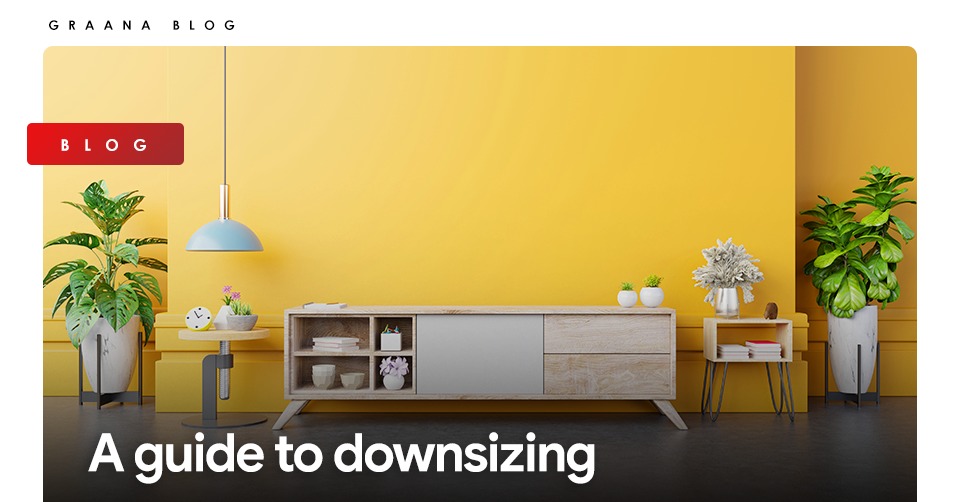
Moving into a new home can be a bittersweet experience. You’re looking forward to the change, yet you’re sad to be leaving home full of memories. Downsizing is more difficult because a smaller space implies you won’t fit all your current belongings.
Downsizing, on the other hand, is a chance to start over. You can make your new apartment feel like home by getting rid of the clutter and filling it with the things you genuinely enjoy.
Downsizing is growing more common among people who own larger homes but no longer use the space they provide. People increasingly want to cash in on the value they’ve built up in their old family houses, and the reasons for doing so are varied. Many young people are downsizing because they want to live smarter and have less impact on the environment.
Some people downsize to save money for retirement and make their lives more comfortable, while others simply do not want to live in a large house once their children have moved out. Another reason why individuals choose a smaller home is the lower upkeep costs. Moving into a smaller home may require determining which belongings you want to preserve and are ready to part with. This can be difficult in and of itself for some individuals, so planning is essential. Knowing that your old belongings are going to a good home will help reduce some of the anxiety associated with parting with them.
Graana.com brings you a list of things you can do to make your downsizing experience easier:
First and foremost, make sure that downsizing is something you truly desire. Consider this carefully, as changing your mind after it is not an option.
You must be pretty positive that selling your home and relocating to a smaller space is what you truly desire. Explore different localities and property sizes to get a leg up on the competition. Measure the size of your rooms and storage places when you go to your new residence. This will serve as a reference for how much you can bring. It is preferable to undervalue than to overestimate. Do one room at a time as you decide what to keep and get rid of. It’s exciting to be on the go.
It’s tempting to put things off until the last minute when things are moving quickly, but don’t fall into this trap. Sort through your belongings and divide them into categories to keep and discard. Decide who you’ll give your unwanted stuff to and make arrangements for them to be picked up as soon as feasible. When the shifting day arrives, this will assist in reducing stress. Figure out what will fit in your new home, and then start getting rid of the rest.
It’s a big job, but it doesn’t have to be done all simultaneously. Plan to do a little each day and allow for extra time, so you don’t feel rushed. First, choose your furniture. Going from huge to little will help you figure out how much space you still have to fill. Even though you’ll have to get rid of a lot of stuff, make sure you can manage without it. Nothing is more frustrating than letting something go and subsequently regretting it.
Examine the items you have multiples of in each place and keep only your favorites or those that aren’t damaged. When decluttering, pay special attention to the kitchen because it is a clutter hotspot for duplicate items.
It will assist you in preserving memories while minimising clutter in your new house when the time comes to downsize. Paper clutter can quickly accumulate over time. Sort through old bills, receipts, and other paperwork, and recycle what you don’t need. In a plastic bin, keep older paper files, such as taxes from the previous decade. Scan any other records or receipts you might need in the future to create a digital copy, then shred and dispose of them. Digital files can also be made from movies, music, and images that will free up a lot of space in your living room and workplace without requiring you to part with items you’d typically keep. In the age of infinite streaming options, keeping VHS cassettes, scratched DVDs, or CDs is probably not worth it.
Downsizing is an emotionally challenging experience. You’ll come upon stuff you haven’t seen in years and have to figure out what to do with them. Allow yourself some time to reflect before making a decision. Keep in mind that you have a limited amount of room. You can decide what you can’t live without, so take only what is genuinely valuable to you.
You’ll be able to enjoy your new house surrounded by the feeling of the home once you’ve completed your move, and it will be well worth it.
ISLAMABAD: The federal government is set to inaugurate the Islamabad Information Technology Park on August…
Lahore, April 23, 2025 – The city of Lahore has successfully completed the construction of…
ISLAMABAD, Pakistan – April 23, 2025 – Chaaye Khana, Pakistan's popular cafe renowned for its…
ISLAMABAD: Prime Minister Shehbaz Sharif laid the foundation stone for the Murree Road underpass on…
DUBAI: Pakistani real estate developers and representatives showcased a range of commercial and residential investment…
ISLAMABAD: Capital Development Authority (CDA) is currently undertaking a major Rs652 million project to upgrade…